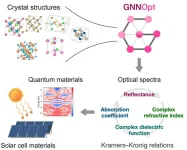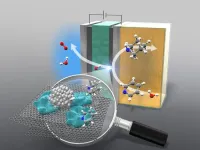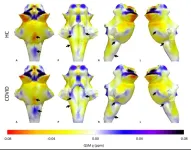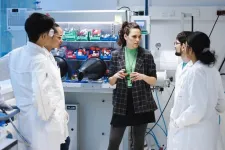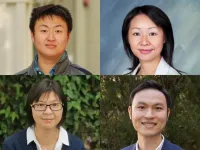(Press-News.org) Researchers from Tohoku University and the Massachusetts Institute of Technology (MIT) have unveiled a new AI tool for high-quality optical spectra with the same accuracy as quantum simulations, but working a million times faster, potentially accelerating the development of photovoltaic and quantum materials.
Understanding the optical properties of materials is essential for developing optoelectronic devices, such as LEDs, solar cells, photodetectors, and photonic integrated circuits. These devices are pivotal in the semiconductor industry's current resurgence.
Traditional means of calculation using the basic laws of physics involve complex mathematical calculations and immense computational power, rendering it difficult to quickly test a large number of materials. Overcoming this challenge could lead to the discovery of new photovoltaic materials for energy conversion and a deeper understanding of the fundamental physics of materials through their optical spectra.
A team led by Nguyen Tuan Hung, an assistant professor at the Frontier Institute for Interdisciplinary Science (FRIS), Tohoku University, and Mingda Li, an associate professor at MIT's Department of Nuclear Science and Engineering (NSE), did just that, introducing a new AI model that predicts optical properties across a wide range of light frequency, using only a material's crystal structure as an input.
Lead author Nguyen and his colleagues recently published their findings in an open-access paper in Advanced Materials.
"Optics is a fascinating aspect of condensed matter physics, governed by the causal relationship known as the Kramers-Krönig (KK) relation," says Nguyen. "Once one optical property is known, all other optical properties can be derived using the KK relation. It is intriguing to observe how AI models can grasp physics concepts through this relation."
Obtaining optical spectra with complete frequency coverage in experiments is challenging due to the limitations of laser wavelengths. Simulations are also complex, requiring high convergence criteria and incurring significant computational costs. As a result, the scientific community has long been searching for more efficient methods to predict the optical spectra of various materials.
"Machine-learning models utilized for optical prediction are called graph neural networks (GNNs)," points out Ryotaro Okabe, a chemistry graduate student at MIT. "GNNs provide a natural representation of molecules and materials by representing atoms as graph nodes and interatomic bonds as graph edges."
Yet, while GNNs have shown promise for predicting material properties, they lack universality, especially in representations of crystal structures. To work around this conundrum, Nguyen and others devised a universal ensemble embedding, whereby multiple models or algorithms are created to unify the data representation.
"This ensemble embedding goes beyond human intuition but is broadly applicable to improve prediction accuracy without affecting neural network structures," explains Abhijatmedhi Chotrattanapituk, an electrical engineering and computer science graduate student at MIT.
The ensemble embedding method is a universal layer that can be seamlessly applied to any neural network model without modifying the neural network structures. "This implies that universal embedding can readily be integrated into any machine learning architecture, potentially making a profound impact on data science," says Mingda Li.
This method enables highly precise optical prediction based solely on crystal structures, making it suitable for a wide variety of applications, such as screening materials for high-performance solar cells and detecting quantum materials.
Looking ahead, the researchers aim to develop new databases for various material properties, such as mechanical and magnetic characteristics, to enhance the AI model's capability to predict material properties based solely on crystal structures.
END
AI speeds up the discovery of energy and quantum materials.
2024-10-08
ELSE PRESS RELEASES FROM THIS DATE:
An efficient way to hydrogenate nitrogen-containing aromatic compounds has been developed
2024-10-08
Successful reduction of the chemical manufacturing industry’s environmental impact relies on finding a greener way to make the chemical building blocks for common and massively consumed compounds.
It’s no secret manufacturing processes have some of the most impactful and intense effects on the environment, with the chemical manufacturing industry topping the charts for both energy consumption and emissions output. While this makes sense thanks to the grand scale in which manufactured chemicals are involved in daily life, it still leaves a lot to be desired for sustainability’s sake. By focusing on renewable energy sources and alternative methods for creating the ...
Study finds common breast cancer treatments may speed aging process
2024-10-08
A new study led by investigators at the UCLA Health Jonsson Comprehensive Cancer Center has revealed that common breast cancer treatments, including chemotherapy, radiation, and surgery, may accelerate the biological aging process in breast cancer survivors.
The findings, published in the Journal of the National Cancer Institute, show that markers of cellular aging—such as DNA damage response, cellular senescence, and inflammatory pathways—significantly increased in all breast cancer survivors, regardless of the type of treatment received. This suggests that the impact of breast cancer treatments ...
Ultra-powered MRI scans show damage to brain’s ‘control center’ is behind long-lasting Covid-19 symptoms
2024-10-07
Damage to the brainstem – the brain’s ‘control centre’ – is behind long-lasting physical and psychiatric effects of severe Covid-19 infection, a study suggests.
Using ultra-high-resolution scanners that can see the living brain in fine detail, researchers from the Universities of Cambridge and Oxford were able to observe the damaging effects Covid-19 can have on the brain.
The study team scanned the brains of 30 people who had been admitted to hospital with severe Covid-19 early in the pandemic, ...
Despite progress, China remains tethered to coal as climate change pressures mount
2024-10-07
A new paper from the University of California San Diego details how China faces numerous political, economic and technological obstacles as it tries to transition away from coal—the country’s primary energy source—while balancing the need to combat climate change with the need for energy security.
Despite its commitment to "phase down" coal, China recently has been permitting and constructing coal plants at rates not seen in a decade.
“There is an increased focus on energy security in China—in 2021, the country experienced its worst power outages in decades, affecting ...
Open Call: Journalists in Residence Program at Institute of Science and Technology Austria (ISTA)
2024-10-07
The Institute of Science and Technology Austria (ISTA) is a PhD-granting research institute near Vienna. It was founded in 2009, with the bold ambition of providing the best possible environment to conduct innovative frontier research. It is dedicated to transcending traditional boundaries of disciplines, cutting-edge infrastructure, training the next generation of scientific leaders, and increasing the impact of science through science engagement as well as technology transfer. It is home to 82 research groups across all fields, ...
Small creatures, big impact
2024-10-07
Could the butterfly effect - in which a small change in one state of a system can result in large differences in a later state - also apply to the earth’s oceans, as well as its skies?
Some species of zooplankton are on the order of one millimeter, but don’t let their size fool you. It’s possible these small creatures can create quite a wave.
While it’s long been understood that large marine animals, like fish or whales, can stir up the ocean’s water columns, the impact ...
Researcher receives grant to enhance quantum machine learning education
2024-10-07
At a time when data are doubling every two years, the U.S. is projected to create over 40 billion gigabytes of data by 2025. To prepare for the influx, Kennesaw State University associate professor Yong Shi, an expert in quantum machine learning (QML), aims to unlock insights from the data surge and educate future QML researchers.
Shi, along with colleagues Dan Lo, professor of computer science, and Luisa Nino, assistant professor of industrial and systems engineering, recently secured a National Science Foundation (NSF) grant to develop open-source, hands-on QML training materials ...
Professor gives American grading system an F
2024-10-07
OXFORD, Miss. – America’s obsession with grades is failing students and jeopardizing the future of education, a University of Mississippi professor argues in his new book.
Josh Eyler, director of the Center for Excellence in Teaching and Learning, recently released “Failing Our Future: How Grades Harm Students, and What We Can Do About It” (Johns Hopkins University Press), in which he argues that the traditional system of grading is harmful to students.
“This book looks at the issues with grades in learning, the kinds of Issues grades ...
NIH awards $2.2 million to UMass Amherst to explore new tuberculosis therapies
2024-10-07
AMHERST, Mass. – The National Institutes of Health recently awarded $2.2 million to Alissa Rothchild, assistant professor in the Department of Veterinary and Animal Sciences at the University of Massachusetts Amherst and an expert in tuberculosis (TB) immunology, to study the very first cells that respond to Mycobacterium tuberculosis (Mtb), the bacteria causing TB.
How those initial cells, known as alveolar macrophages, or AMs, respond to the bacteria is not entirely known, though Rothchild and her lab have shown in a previous study that AMs don’t respond to Mtb infection the way other macrophages do. Instead of mounting a strong inflammatory response, AMs turn on a cell-protective ...
Immune-based treatment gets a boost to its cancer-fighting superpowers
2024-10-07
Imagine a world where your own immune cells are transformed into cancer-fighting superheroes. This is the promise of CAR-T cell therapy, a groundbreaking treatment that’s already saving lives.
In this therapy, patients’ own immune cells are collected, genetically engineered so that they specifically target cancer cells, then returned to the body. The result is a potent new option for battling blood cancers. However, as with any superhero journey, the process of harnessing this incredible power comes with ...
